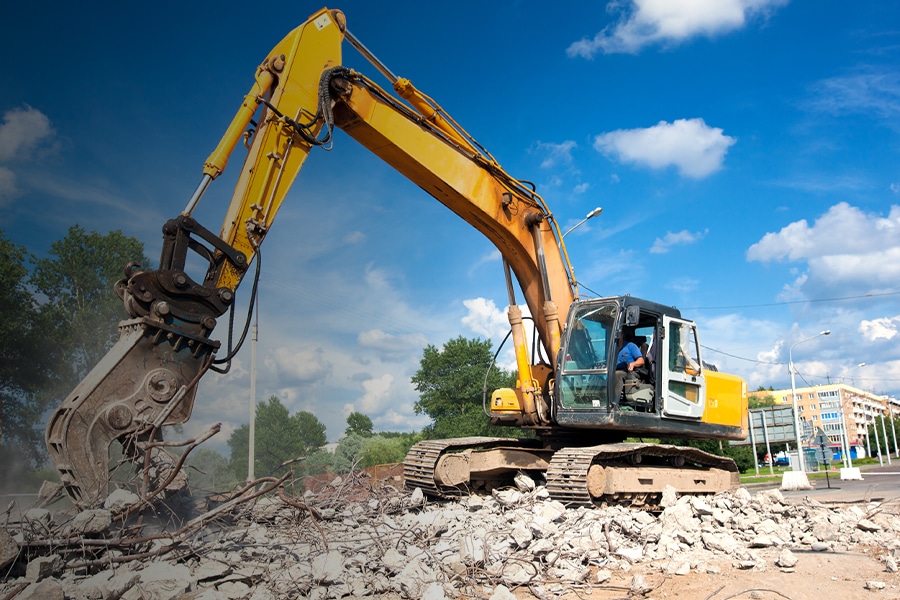From wood and steel to water and electricity, building our homes, offices and infrastructure takes a staggering amount of resources. The construction industry is responsible for 30% of natural resources extracted and 25% of the solid waste generated worldwide, according to Science Direct. At the same time, 38% of global emissions come from the materials used for building, the construction itself and the resulting structures, Environment Journal reports.
To make construction more sustainable will take a shift from the linear “take, make, waste” model dominant for decades to a circular “take, make, retake, remake and restore” model. Implementing this circular approach can help address climate change, waste and pollution and set the industry on the path to a low-carbon future.
The Linear Economy of “Take, Make, Waste”
For decades, the construction industry has followed a straight line from extraction of resources to disposal of waste:
- Take refers to extracting raw materials including energy from the environment and turning them into construction materials.
- Transforming these resources lets the industry make finished products, such as buildings—but often in ways that lead to end-of-life obsolescence.
- With no value or possibility of reuse, the waste often ends up in landfills or incinerators and can harm the environment if not properly managed.
The linear economy is a human-centric model—and in the natural world, the circular economy prevails.
The Circular Economy of Reconstruction, Reuse and Regeneration
The Ellen MacArthur Foundation describes a circular economy in the built environment that relies on three overriding principles—design out waste, reuse materials and regenerate natural systems.
Design out waste and pollution at the start: For too long, humans designed and built structures without asking what end of life would look like. So it’s not surprising that building demolition accounts for more than 90% of the 600 million tons of construction-related waste generated in the United States each year, according to Greenbiz. Globally, that volume is expected to balloon to 2.2 billion tons by 2025.
To eliminate waste, designers cannot start at the end. Rather, they must design buildings to be reconstructed and materials to be reused. Removing concrete, aluminum and steel wherever it makes structural sense also reduces the carbon emissions produced by creating these materials.
“Whenever I’m talking circularity, I always bring it back to the 3 Rs: reduce, reuse, recycle,” said Keith Bryan, director, built environment, British Standards Institute, America. “I think a lot of people don’t realize that they are in order of effectiveness. That starts with designing buildings for longer usage—because the most sustainable building is the one that’s never built.”
Keep products and materials in use at their highest value: The second major principle is reuse—of buildings, sites and materials. At the start, the primary question must be whether it’s necessary to tear down the existing structure to rebuild on the same site. If the structure and façade are in decent shape, construction firms can often get by with a gut renovation.
Another possibility is modular construction that includes prefabricated components that contractors can easily transport to a site and assemble into a finished building. At the end of life, contractors can disassemble and reconfigure the structure, reducing the need for new raw materials. Repurposing materials such as reclaimed wood or salvaged building components can also help close the loop by keeping resources in use longer.
“There are many opportunities for material reuse, like reusing concrete as aggregate or drywall broken down as fertilizer,” Bryan said. “But ideally, a building is designed so that the materials can be reused directly in the same way they were originally used.”
To keep products and materials in circulation, designers must ask how they can repair, refurbish, remanufacture and—if no other possibilities emerge—recycle. Even if recycling results in materials being downcycled and used as fill, it’s a good starting point for construction firms moving from linear toward circular models.
“Quantifying the various types of waste on a construction site—metallic waste vs. drywall vs. wood vs. materials bound for the landfill—can expose weaknesses in processes that firms can then subsequently improve,” Bryan said.
Regenerate natural systems: The third principle for a circular economy in construction is to enhance and preserve renewable resources and avoid using nonrenewable ones. In short, mimic nature by restoring or renewing materials and energy.
Technical materials like metals, plastics and synthetic chemicals cannot re-enter the environment—their value would be lost. Instead, they must be cycled continuously so they can become the resources of the future. But once they have gone through one or more use cycles, biological materials can safely re-enter the natural world. There they will biodegrade over time and return embedded nutrients to the environment.
Another path to regeneration is using renewable energy instead of fossil fuels to build and operate structures. In fact, a holy grail in regenerative design is to use no fossil fuel in building projects and reach net-zero energy.
Small Steps Toward Enormous Gains
Along with the reduced impact on climate, resources and fossil fuel use, the circular economy offers savings on material costs, reduced vulnerability to pricing and improved security of supply. But achieving these benefits requires considering material and energy flows across the full lifespan of a construction project.
“I think it’s important for companies not to be ashamed of where they are now,” Bryan said. “As with any sort of process improvement, you should start by measuring your current state. You need to have some idea of what your typical waste diversion processes are to get better at circularity.”
Also critical is recognizing areas where a firm has control or influence. The long value chain in construction requires partnerships among many players to create a circular economy. For example, you can choose the suppliers you use and insist on certain caveats to move your firm closer to a circular model. If you have influence, you can also talk with customers or even offer a circular approach to construction at a slightly higher price point that lets customers feel good about the process.
Few construction firms operate in an entirely linear or circular manner, of course—instead, they’re at some point on a continuum between the two. The key is to move toward reducing use of natural and energy resources and eventually regenerating them faster than they’re consumed. Given construction’s impact on sustainability worldwide, even small steps can make a huge impact on people and the planet.
















